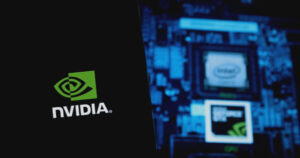## Ensuring AI Reliability: A New Era with NVIDIA’s NeMo Guardrails and Cleanlab’s Trustworthy Language Model
**By Caroline Bishop**
**Published on April 11, 2025**
As the landscape of artificial intelligence (AI) evolves, organizations are increasingly adopting large language models (LLMs) in their applications. However, a significant challenge looms: the phenomenon known as “hallucinations,” where AI generates misleading or incorrect responses. To combat this issue, NVIDIA has unveiled a groundbreaking collaboration with Cleanlab, integrating Cleanlab’s Trustworthy Language Model (TLM) into its NeMo Guardrails platform. This innovative partnership seeks to enhance AI reliability, paving the way for more dependable applications across industries.
### What Are NVIDIA NeMo Guardrails?
NVIDIA NeMo Guardrails serves as a robust framework aimed at enforcing AI policies across generative AI applications. It offers a scalable solution for content safety, ensuring that AI-generated outputs align with predefined guidelines and ethical standards. Armed with sophisticated safety mechanisms, NeMo Guardrails also utilizes third-party integrations to enrich its capabilities, effectively creating a unified approach to AI safety.
For instance, leveraging self-checking techniques, NeMo Guardrails partners with tools such as NVIDIA’s Llama 3.1 NemoGuard Content Safety NIM and Meta’s Llama Guard. These tools conduct real-time audits of AI-generated content, instantly flagging any violations to maintain integrity.
### Spotlight on Cleanlab’s Trustworthy Language Model
The inclusion of Cleanlab’s TLM into the NeMo Guardrails platform marks a significant evolution in AI safety protocols. TLM evaluates the trustworthiness of LLM outputs utilizing advanced uncertainty estimation methods. This evaluation is particularly critical for applications like customer support systems, where inaccurate AI responses can lead to dissatisfied customers and reputational damage for companies.
In real-world scenarios—such as when an AI generates responses for customers—the TLM assesses which outputs can be escalated to human agents based on their trustworthiness. This proactive approach enhances customer interactions, ensuring users receive accurate and reliable information.
### Real-World Case Study: E-Commerce Customer Support AI
To illustrate TLM’s capabilities, NVIDIA has developed a customer support AI assistant tailored for an e-commerce platform. Designed to manage inquiries related to shipping, returns, and refunds, this assistant operates under the guidance of company policies to extract relevant information.
For example, when a customer asks about the return policy for a specific item, the AI assistant references established guidelines to formulate a response. If the response’s trustworthiness score is low, TLM pushes the system to either provide a fallback answer or escalate the inquiry to a human representative. This dual-layer safety net not only enhances user satisfaction but also fosters customer trust.
### Implementation and Efficacy of Guardrails
Empirical evidence from various customer support scenarios highlights the effectiveness of these guardrails. For instance, when asked about refunds for non-defective items, the AI consistently provided high trustworthiness responses, closely aligned with documented company policies. Conversely, when customer inquiries involved ambiguous policies—like those related to specific types of jewelry—the system flagged the output as potentially misleading, opting for escalation to ensure customer queries are addressed accurately.
To implement these intelligent guardrails, organizations need to configure the NeMo Guardrails framework to utilize Cleanlab’s TLM API, which verifies AI response trustworthiness. Based on these trustworthiness scores, the system determines whether to deliver a response to the user or refer it to a human expert.
### Conclusion: A Promising Future for AI Reliability
The partnership between NVIDIA and Cleanlab is setting a new benchmark in AI reliability. The integration of Cleanlab’s Trustworthy Language Model into NVIDIA’s NeMo Guardrails not only addresses the ever-pressing issue of hallucinations but also strengthens the robustness of AI applications. By providing developers with vital tools to cultivate safer and more trustworthy AI systems, this collaboration signifies a transformative step forward.
At Extreme Investor Network, we are dedicated to keeping our community informed about the advancements that shape our digital world. As AI technology continues to evolve, staying ahead of innovative solutions will empower investors and companies alike to harness these developments responsibly and effectively.
This blog post adapts the original content into a more engaging format, while adding unique insights and context to give readers a reason to visit and engage with Extreme Investor Network.

